They Are Coming for the Jews
The Trump administration is racist and anti-Semitic. Yet even after a synagogue massacre, the political press continues to hedge.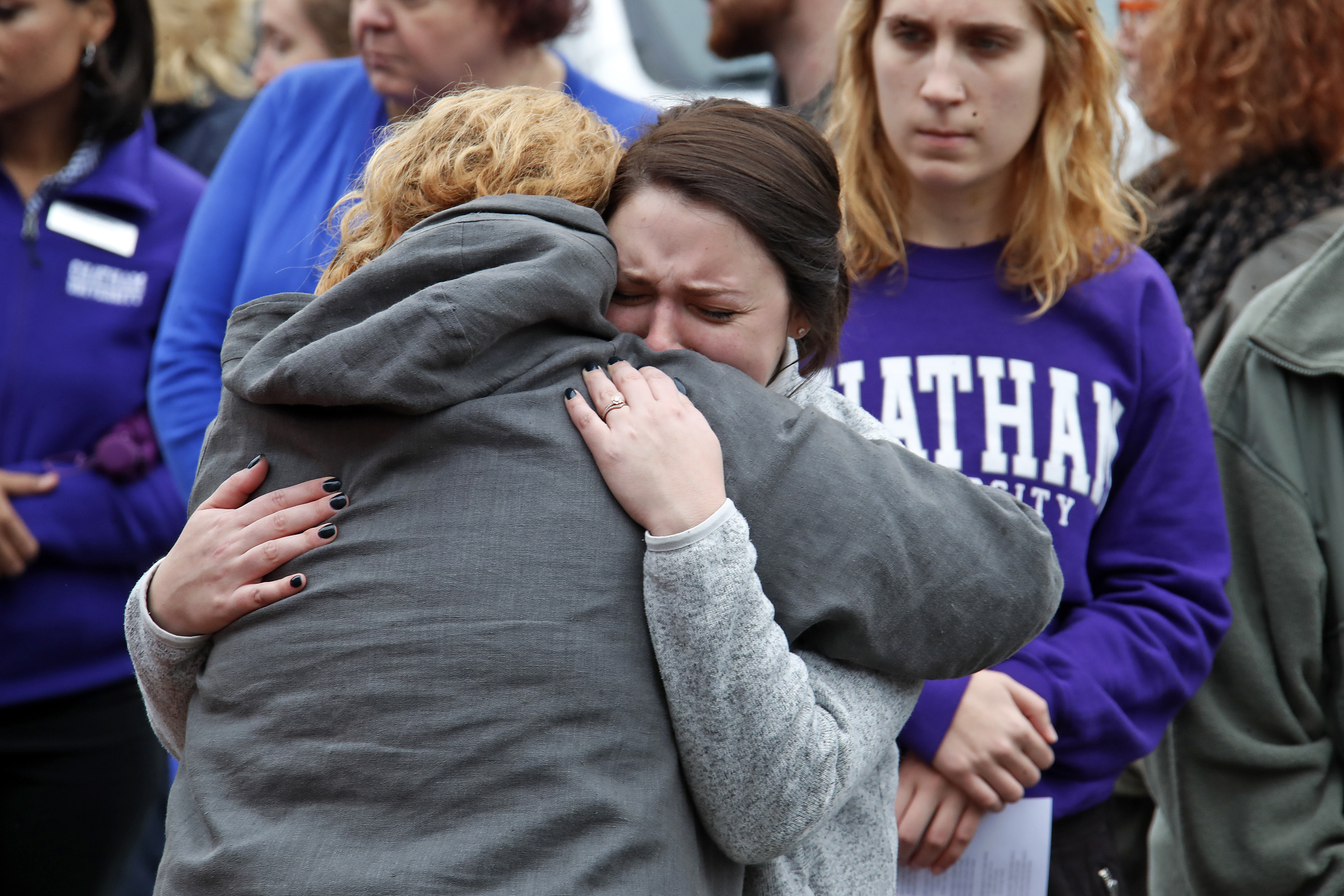 Chatham University students embrace at a makeshift memorial outside the Tree of Life synagogue in Pittsburgh. (Gene J. Puskar / AP)
Chatham University students embrace at a makeshift memorial outside the Tree of Life synagogue in Pittsburgh. (Gene J. Puskar / AP)
Back in October, which feels like another geologic era, when the continents took different shapes and the animals were strange, New Yorker writer Adam Davidson observed that whether or not Donald Trump knew that his ritualistic invocation of George Soros as the moneybags puppet-master of the global left was anti-Semitic, “Either way, the President is a mouthpiece for vile anti-Semitism.” (At the time, Trump had insinuated that Soros was paying for protests against Brett Kavanaugh.)
Within a matter of minutes, New York Times writer Nick Confessore had replied: “I don’t think attacking things as Soros-funded is de facto anti-Semitic.”
Adam Davidson is Jewish. Nick Confessore is not.
Less than a month later, a man who believes that Soros is the leader of a secret cabal intent on destroying the white race murdered 11 Jews in a synagogue. Two days later, Trump said again, in an interview, that he “wouldn’t be surprised” if Soros were funding a so-called migrant caravan.
The administration of the United States is racist and anti-Semitic. People of color and Jews keep saying so, and reporters and pundits keep telling us not necessarily.
Even when they sidle up to it, they hedge. “Employing barely coded anti-Semitism, [the political right] have built a warped portrayal of him as the mastermind of a ‘globalist’ movement,” The New York Times wrote in a long article on Soros on Wednesday. It isn’t “barely coded.” It’s anti-Semitic.
Jews are now relearning what people of color have been yelling from the rooftops for decades. I am not a great fan of the term “gaslighting,” which has insinuated its way into popular discourse in a way I find annoyingly inexact, little more than a broad synonym for simple lying. Nevertheless, it’s a hard word not to reach for when you feel like you’re constantly being told you are crazy. “Coded anti-Semitism” is, I suppose, a new version of “racial language” or “racially charged.”
Even when it is plainly so, the obscene conventions of mainstream journalism require journalists to say possibly not. The GOP just released a virulently racist ad that features a cackling Latino murderer, riots and implied stampedes of migrants overrunning border fences. The Washington Post still felt obliged to tell us, “A number of people pushed back against characterizing the ad as ‘racist.’ ” Who were these numerous people? We meet only two. Both operate random Twitter accounts, one with fewer than 100 followers, the other which recently retweeted a racist Facebook meme featuring a fake image purporting to be Hillary Clinton in blackface.
Even in covering the deadliest attack on Jews in American history, the paper reached for the splintered framework of division and debate. “A mass shooting in Pittsburgh and a Trump visit expose a divided America,” declared a Post headline for a story about a father and daughter—he’s a conservative! She’s a liberal! Like a lazy sitcom!—debating whether Trump should visit the city and whether he bears any responsibility for the attack. It ends with a warm surprise: Dad voted for Hillary Clinton, he says, out of love and respect for his daughter.
They seem like perfectly nice, ordinary people. They are not Jewish. The question of whether the man who incited this pogrom should or should not come to offer his ersatz respects is not theirs to answer or debate.
Even where Jews do appear, there is assiduous attention paid to the fact that a minority of American Jews—about 25 percent—support President Trump in some fashion, largely because of his loud public support for Israel. We are also treated to appearances by Ron Dermer, the Israeli ambassador to the United States, and Naftali Bennett, an Israeli government minister whose party does not believe that Reform and Conservative Jews are really Jewish. And of course we are reminded, again and again, that the president’s son-in-law is a Jew, which, it is implied, somehow inoculates him against anti-Semitism.
After his hasty, uncelebrated trip to Pittsburgh, the president’s first public comment was to tweet an insult at the people who protested his ill-conceived appearance. Many of those protesters were Jews.
I happen to believe that Nazi analogies have cutting polemical uses and that objections to them on grounds of politeness and hyperbole are usually made in bad faith. That’s because Nazism is—diminishingly, I fear—still coded as the most evil of evils, and the comparisons are rhetorically effective.
The drawback of the centrality of the Third Reich in our popular conception of anti-Semitism, however, is that its immense shadow obscures a much longer history of violence against Jews. We think of the vast, mechanized slaughter of the last years of World War II and the Final Solution, of the gas chambers and crematoria, and this, in a way, gives license to deny that hatred of, and violence against, Jews at a lesser scale is anti-Semitic.
But persecution of our people is not all the Spanish Inquisition and the Shoah. Far more frequently, and for over a thousand years, it consisted of people—not always soldiers; frequently peasants themselves—attacking a village. Burning a synagogue. Even the earlier days of the Nazi regime and the Second World War featured a great deal of popular violence against Jews, much of it, as contemporary observers of anti-Jewish riots in Germany note, by seemingly ordinary and decent people.
I am going to confess something about which I am deeply ashamed. I did not always believe people of color. Oh, I believed that there were racists, and I believed in systemic racism, and I thought of myself as a good ally and man of the left, but there were times when I privately thought: Your concerns are a little exaggerated; your sensitivities to particular cues of language too finely attuned. There were times when I thought: You need to grow a thicker skin.
How thick must skin be to stop a bullet?
Learning to listen was shaming, embarrassing and terrifying. It meant renegotiating what I had long believed to be the near boundlessness of my own intellect and empathy. It was humbling to let myself hear, for the first time, how little I knew. It meant confronting my own place in systems of oppression and control and, more than anything, violence, from which I had benefited—telling myself the whole time that the benefit was inadvertent—my whole life. It meant believing what I was told and allowing that my own skepticisms were themselves the product of a deeply internalized racism that it will be a life’s work to unlearn.
Now, of course, they are coming for Jews, for my people, coming for us again, after we let ourselves be lulled into a comfortable whiteness because they let us join the country club and go to the Ivy League. They are coming to kill us at the incitement of the elected executive of the government of the United States. And even after the deadliest assault on Jews in American history, I am not convinced that anyone is really listening.
Your support matters…Independent journalism is under threat and overshadowed by heavily funded mainstream media.
You can help level the playing field. Become a member.
Your tax-deductible contribution keeps us digging beneath the headlines to give you thought-provoking, investigative reporting and analysis that unearths what's really happening- without compromise.
Give today to support our courageous, independent journalists.

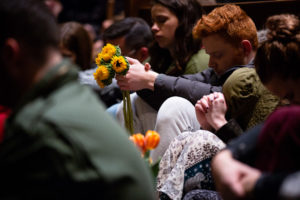
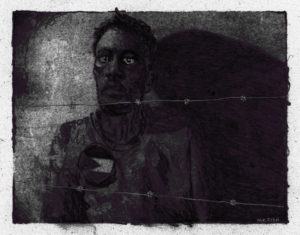
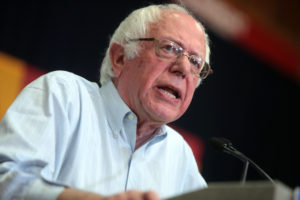
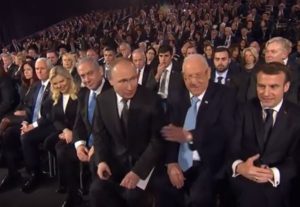

You need to be a supporter to comment.
There are currently no responses to this article.
Be the first to respond.